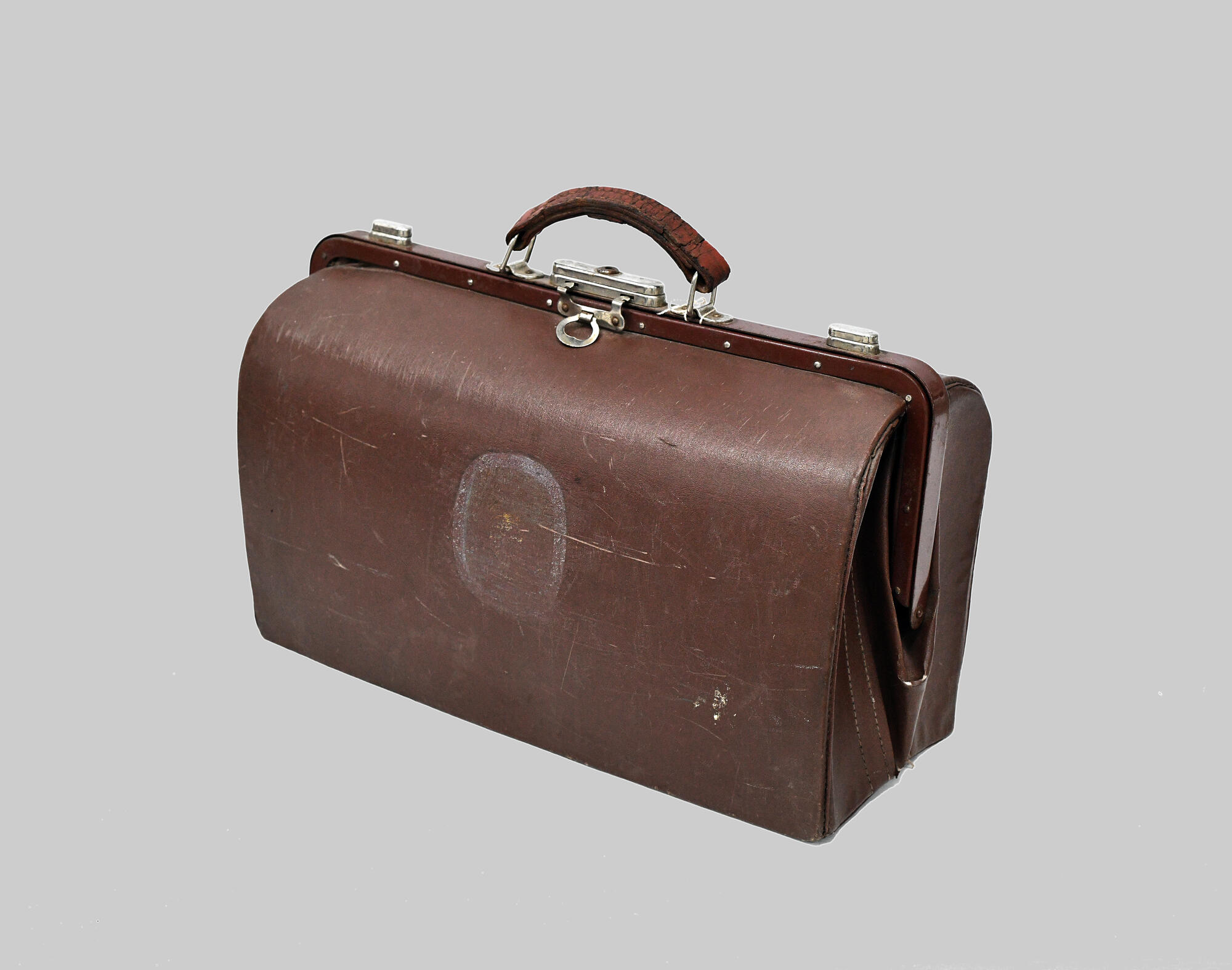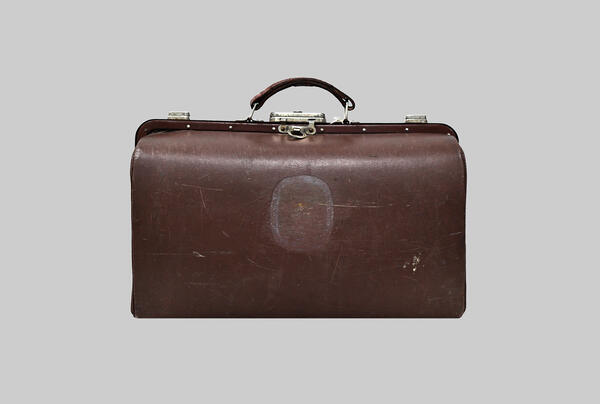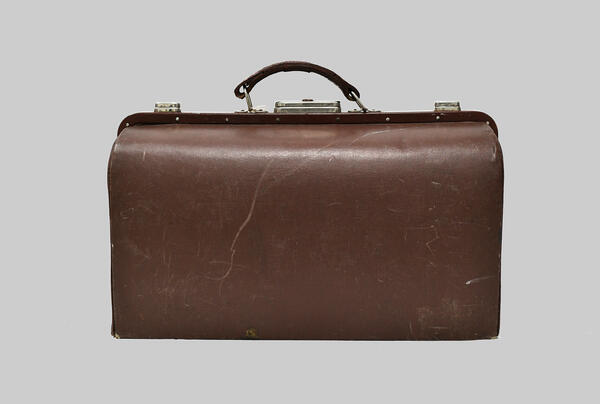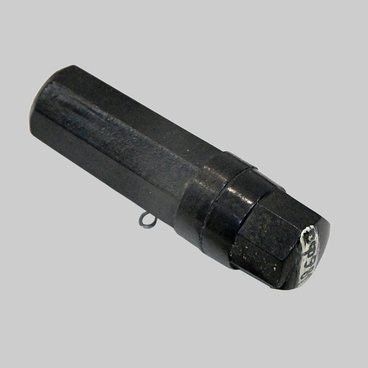The Museum of the 112th Bashkir (the 16th Guards) Cavalry Division houses an old medical travel bag.
A travel bag is a medium-sized leather bag with a small handle. The predecessor of a modern travel bag was a luggage bag made from the pieces of an old carpet. This method of transporting luggage appeared in the 19th century in North America in connection with the development of the railways. People began to travel more often, and a travel bag was in demand due to its low price, practicality and durability. Over time, manufacturers began to use leather instead of fabric.
The size and shape of the bag made it very popular among doctors who visited their patients. The medical travel bag was functional and could hold all the medical instruments and medicine needed for a patient visit.
During the Great Patriotic War, the 80th Medical Squadron was part of the 112th Bashkir Cavalry Division. There were bags for orderlies and combat medics in the squadron’s supply. The orderly’s bag contained mainly materials for 15–25 dressings, as well as ampoules of iodine and ammonia. The combat medic’s bag had some medicines added, as well as sodium bicarbonate and copper sulfate, which were used as antiseptics.
A travel bag is a medium-sized leather bag with a small handle. The predecessor of a modern travel bag was a luggage bag made from the pieces of an old carpet. This method of transporting luggage appeared in the 19th century in North America in connection with the development of the railways. People began to travel more often, and a travel bag was in demand due to its low price, practicality and durability. Over time, manufacturers began to use leather instead of fabric.
The size and shape of the bag made it very popular among doctors who visited their patients. The medical travel bag was functional and could hold all the medical instruments and medicine needed for a patient visit.
During the Great Patriotic War, the 80th Medical Squadron was part of the 112th Bashkir Cavalry Division. There were bags for orderlies and combat medics in the squadron’s supply. The orderly’s bag contained mainly materials for 15–25 dressings, as well as ampoules of iodine and ammonia. The combat medic’s bag had some medicines added, as well as sodium bicarbonate and copper sulfate, which were used as antiseptics.





